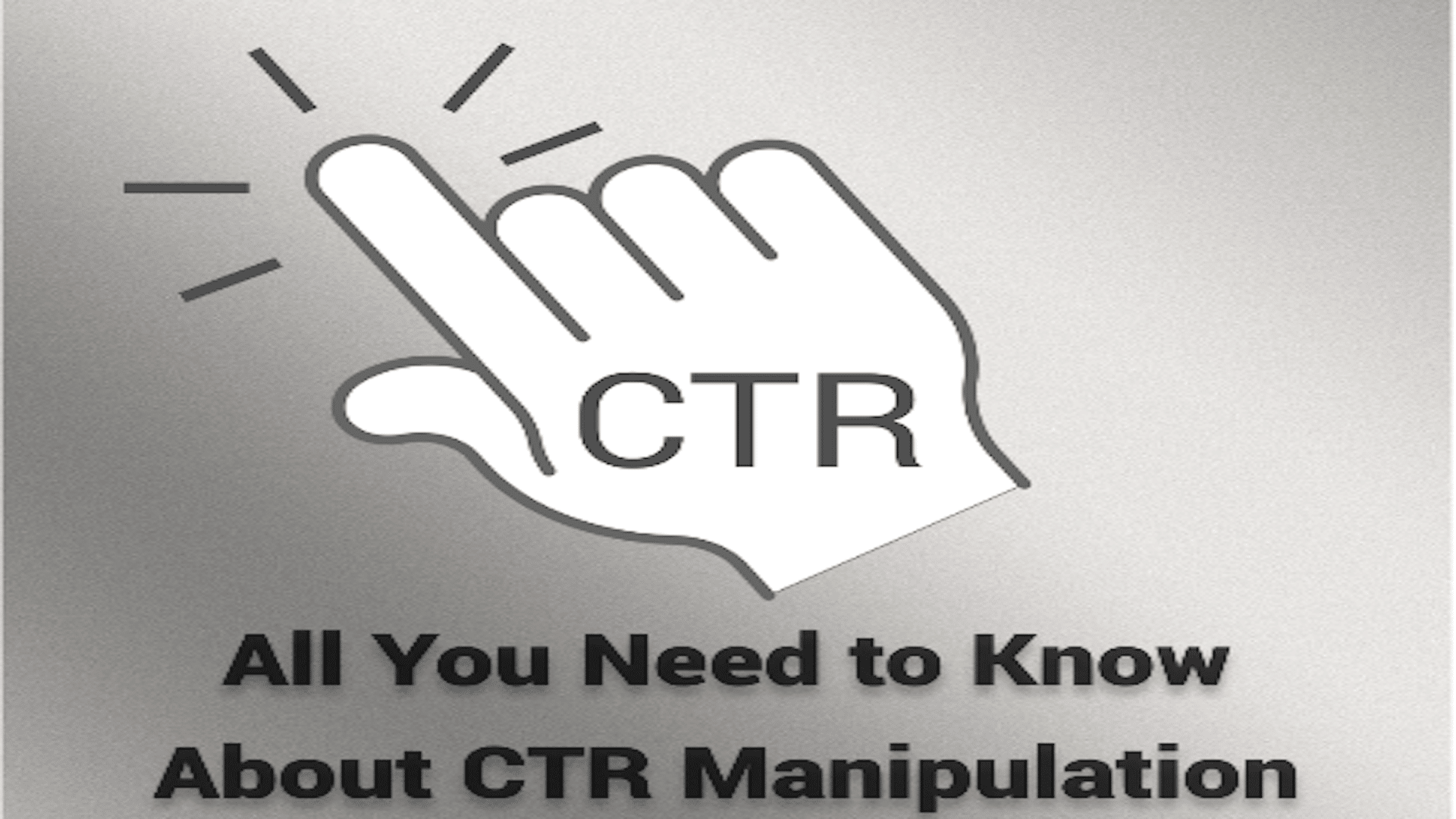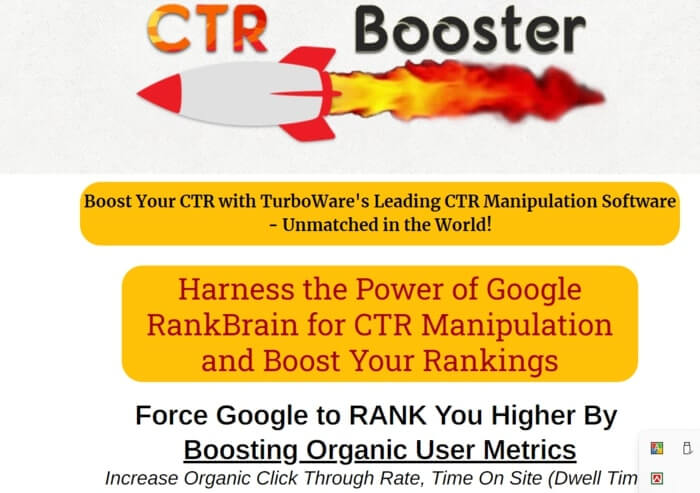Enhance Your Google My Business Listing with GMB CTR Manipulation
Enhance Your Google My Business Listing with GMB CTR Manipulation
Blog Article
Enhancing Organic Click-Through Fees With CTR Control
The optimization of organic click-through prices (CTR) is a nuanced venture that depends upon understanding both individual psychology and reliable material discussion. By leveraging tactical adjustment methods, such as incredibly crafted headlines and aesthetically engaging elements, online marketers can significantly boost individual engagement. Nonetheless, the landscape is rife with misunderstandings and oversimplifications concerning what truly drives CTR. As we discover the ins and outs of these approaches, it becomes necessary to recognize the underlying principles that can lead to continual success in capturing audience focus. What absolutely establishes apart the efficient from the ineffective in this critical aspect of electronic advertising?
Comprehending Click-Through Rates
Understanding click-through rates (CTR) is essential for evaluating the effectiveness of internet marketing approaches. CTR determines the portion of users that click a certain link or advertisement contrasted to the overall number of customers that view it. A greater CTR suggests that the content is involving and pertinent to the target audience, while a lower CTR might indicate a need for optimization.
To calculate CTR, separate the variety of clicks by the number of impressions and increase by 100. For example, if an advertisement gets 300 clicks out of 10,000 impacts, the CTR would be 3%. This statistics is important for assessing numerous aspects of electronic advertising, including seo (SEO), e-mail campaigns, and social media advertising and marketing.
Additionally, analyzing CTR helps marketers determine which strategies generate the most effective results and which call for refinement. By concentrating on improving CTR, services can enhance their material's visibility and efficiency, resulting in raised traffic and possible conversions. Comprehending the subtleties of CTR is foundational for any kind of marketing professional aiming to enhance their on-line visibility and maximize return on investment (ROI)

The Psychology of Customer Behavior
User behavior is considerably influenced by mental elements that determine exactly how individuals interact with online content. Understanding these factors is vital for enhancing click-through rates (CTR) in natural search results page. Cognitive biases, such as the anchoring impact, play a crucial function fit customers' assumptions. Their initial impacts can heavily affect their succeeding judgments regarding relevance and credibility. when customers come across information.
Emotional responses additionally considerably influence customer habits. Content that reverberates mentally can trigger a feeling of urgency or inquisitiveness, prompting customers to click. Additionally, social evidence-- such as individual testimonials or ratings-- can boost trust and motivate interaction, as people frequently seek to the actions of others to inform their own decisions.
Additionally, the concept of scarcity can drive clicks - GMB CTR Manipulation. Limited-time deals or special web content create an anxiety of losing out (FOMO), compelling customers to act rapidly. Recognizing these psychological chauffeurs allows online marketers to develop more compelling material that reverberates with their target market
Effective CTR Adjustment Techniques
Leveraging mental understandings can considerably improve click-through prices (CTR) via targeted manipulation methods. Among the most efficient methods is using compelling headlines that evoke inquisitiveness or necessity. Wording titles as questions or integrating numbers can bring in more attention, triggering users to click.
One more method entails optimizing meta descriptions to develop a feeling of relevance and immediacy. By plainly describing the options or advantages given in the content, you can engage potential readers and convince them to click. In addition, utilizing power words-- such as "unique," "shown," or "free"-- can boost the appeal of your material.
Aesthetic aspects likewise play a critical function. Integrating appealing photos or thumbnails can attract individuals in and improve CTR. A/B screening different visuals can aid identify which photos resonate ideal with your audience.
Finally, making sure that your web content promises deliverable worth causes higher CTR. They are more most likely to engage when customers view that clicking will certainly offer them with significant understandings or solutions. By using these techniques thoughtfully, online marketers can properly adjust CTR to their benefit while preserving ethical requirements.
Typical Misconceptions Regarding CTR
Several misconceptions surround click-through rates (CTR) that can lead marketers to make misdirected choices. While a high CTR recommends that even more individuals are clicking, it does not guarantee conversions or sales.
An additional common idea is that CTR is an isolated metric. In truth, CTR must be examined combined with various other efficiency signs, such as bounce rate and conversion rate, to obtain an all natural sight of campaign success.
Furthermore, some online marketers think that maximizing for CTR alone is enough. However, focusing specifically on CTR can cause clickbait techniques that may bring in clicks but fail to engage customers meaningfully. This strategy can hurt brand credibility and lead to reduced retention rates
Finally, there is a notion that CTR approaches are generally reliable. The reality is that optimum CTR strategies can vary significantly throughout industries and target audiences, demanding customized methods for various market sections. Understanding these misconceptions is essential for creating reliable CTR methods that straighten with overarching advertising goals.
Measuring CTR Success
Although high click-through rates (CTR) can suggest effective engagement with material, determining their true success needs a detailed home analysis of several factors. Initially, it is necessary to recognize the context in which the CTR is attained. For example, a high CTR on a deceptive title might not translate to purposeful involvement or conversions, eventually mirroring inadequately on the brand name's trustworthiness.
2nd, evaluating the resource of website traffic is essential. Organic web traffic from online search engine can represent a robust content technique, while clicks from irrelevant sources might indicate an absence of targeting. In addition, measuring the succeeding individual behavior is vital; assessing metrics such as bounce price, time invested in page, and conversion prices can give deeper insights into the top quality of the interaction initiated by the CTR.

Verdict

The optimization of organic click-through rates (CTR) is a nuanced venture that pivots on recognizing both customer psychology and reliable material discussion. CTR measures the percentage of individuals that click on a particular web link or promotion contrasted to the complete number of individuals that view it view it. A higher CTR indicates that the content is involving and appropriate to the target audience, while a reduced CTR might indicate a demand for optimization.
Concentrating exclusively on CTR can lead to clickbait strategies that might bring in clicks yet fall short to engage users meaningfully. Additionally, measuring the subsequent customer behavior is vital; evaluating metrics such as bounce price, time spent on web page, and conversion rates can supply much deeper understandings right into the top quality of the involvement launched by the CTR.
Report this page